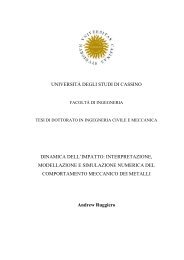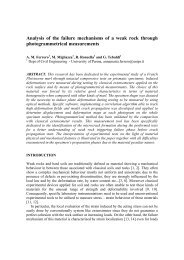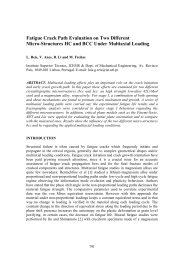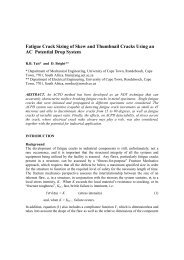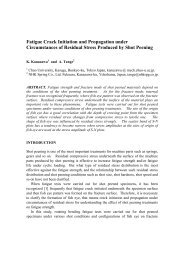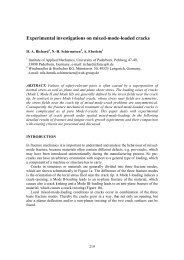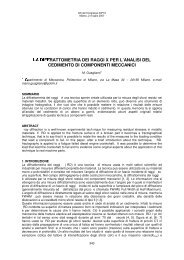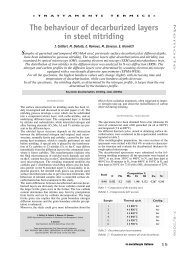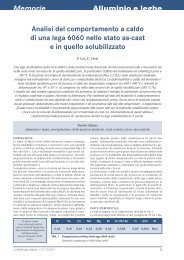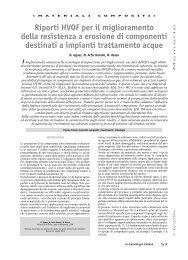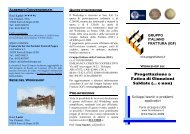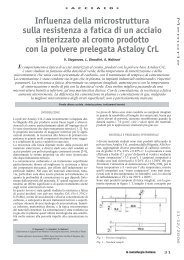Prove di laboratorio su anodi galvanici in acqua di mare sintetica in ...
Prove di laboratorio su anodi galvanici in acqua di mare sintetica in ...
Prove di laboratorio su anodi galvanici in acqua di mare sintetica in ...
You also want an ePaper? Increase the reach of your titles
YUMPU automatically turns print PDFs into web optimized ePapers that Google loves.
5/2005 Memorie<br />
trochemical behaviour of ano<strong>di</strong>c materials.<br />
The re<strong>su</strong>lts of this paper are related to a first series of laboratory<br />
tests done <strong>in</strong> synthetic seawater (ASTM D 1141-98),<br />
<strong>in</strong> anaerobic and aerobic con<strong>di</strong>tions at room temperature.<br />
Other laboratory tests are also planned <strong>in</strong> <strong>di</strong>fferent con<strong>di</strong>tions:<br />
chang<strong>in</strong>g the pH and the temperature and ad<strong>di</strong>ng<br />
<strong>su</strong>lphides. A second part of the research, currently <strong>in</strong> progress,<br />
<strong>in</strong>cludes field tests and should be f<strong>in</strong>ished on march<br />
2005.<br />
The anodes were made of commercial alloys for seawater:<br />
z<strong>in</strong>c, alum<strong>in</strong>ium and magnesium; the cathodes were pipe<br />
piece of carbon steel. A SCE electrode and z<strong>in</strong>c electrodes<br />
(ano<strong>di</strong>c alloy) were used as reference electrodes. The protection<br />
potential imposed was –800 or –900 mV vs SCE, and<br />
58<br />
la metallurgia italiana<br />
C ORROSIONE<br />
it was regulated us<strong>in</strong>g a variable “shunt” resistance. The tests<br />
had a duration of 4 to 6 months. PMMA cells of 3 litres<br />
of capacity were used <strong>in</strong> the aerobic tests, and for the anaerobic<br />
con<strong>di</strong>tions, conta<strong>in</strong>ers of 20 litres hermeticaly sealed<br />
were used.<br />
The tests showed that:<br />
• the protection current density mea<strong>su</strong>red <strong>in</strong> aerobic me<strong>di</strong>um<br />
is typical of stagnant con<strong>di</strong>tions;<br />
• the anode efficiency was high for z<strong>in</strong>c alloy, low for magnesium<br />
and variable for alum<strong>in</strong>ium ones;<br />
• the deposit observed on the cathodes connected to the z<strong>in</strong>c<br />
anodes, has the best morphologic characteristics;<br />
• no significant effect on the protection current density has<br />
been noticed <strong>in</strong> anaerobic con<strong>di</strong>tions.



